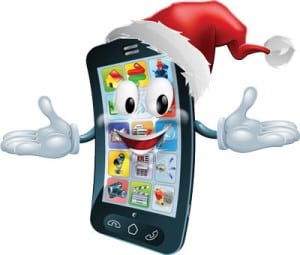 You may have started the year off with a resolution to provide a better inbox experience for subscribers who view your messages on mobile devices. It seems like everyone started off the year wanting to use responsive design for everything!
You may have started the year off with a resolution to provide a better inbox experience for subscribers who view your messages on mobile devices. It seems like everyone started off the year wanting to use responsive design for everything!
Well, we all know that resolutions are easy to make and difficult to keep. You may not have the time and resources to commit to a pre-holiday responsive design email overhaul, but with the full frenzy of the holiday season still a few weeks away, you do have time to ensure your mobile users have a fun and functional inbox experience by avoiding these un-merry mobile mistakes.
Even if you have completed your holiday planning, there’s always time to fine-tune the details. Make the effort now, before the season gets too busy, to make the season a bit brighter for your shoppers.
Teeny-Tiny Unreadable Copy and Images
While you may not have had time to develop a responsive design for your emails, it doesn’t mean that your emails can’t look good on a small screen. So many retailers feel pressured to jam-pack emails with a ton of product images and offers that can make some messages difficult to view. Use images that will still effectively showcase your product and promotion when shrunken down. If you must include a large variety of products, consider a more vertical composition. Recruit a team of testers who own various devices to see how variations in size and placement look on various mobile devices. Don’t forget to check the phone’s default email client as well as mobile browser and app versions of common domains such as Gmail, Yahoo and AOL.
Untappable Links
Retailers also often try to cram in as many links as possible into holiday emails. This is usually OK on a traditional computer, where the subscriber can use their mouse to navigate all of the click opportunities. When these messages are viewed on a smaller screen, however, the subscriber’s fingers may not be able to tap the links as easily. Whether you are using an image map or linked text, test your clickable areas to ensure they are both clickable on traditional computers and tappable on mobile devices.
Provide No Alternatives
Many holiday shoppers will be shopping your site for the first time and may have questions they need answered before they purchase. The shopper may also be interested in buying online and picking up in store. These shoppers need alternative calls to action besides directly clicking through to your site. Include information about ship-to-store options and ensure that your phone number is in a standard format. Most mobile devices will detect a phone number that does not use letters or unusual format and will allow the customer to click and call your customer service number.
Promo Codes in Images
Please do not bury your promo codes in images. Yes, I understand that you may need to use a specific typeface and your background image is gorgeous, but think about the shopper on their mobile device who wants to quickly click through your email, take advantage of the promo and submit an order. Whether your promo code is easy to remember, like “FREESHIP” or just a random string, asking the subscriber to remember the promo code as they move from the inbox to the product page and then through the checkout process is a lot of work. Subscribers who typo the promo code or simply can’t remember it will be likely to abandon the order. If the promo code is actual text, the subscriber can easily copy the code and paste it in their shopping cart regardless of the device they are using to buy.
Clunky Store Locators
Your holiday emails will probably include a store locator or, better yet, store-specific information. Test these links on mobile devices to see if the click results in the clicker being taken to a desktop version of your site with a map that is unusable on a smartphone. A customer who is sitting in their car, leaving a store, or simply planning their shopping day needs this information fast. Your location may get skipped over if you put this roadblock in the midst of the user experience. Redirecting the clicker to the device’s map app or a mobile friendly store locator could make your store the shopper’s next destination.
Desktop Site Redirection
Last, and certainly not least, test your messages to ensure clickers using mobile devices are being redirected to a mobile-friendly version of your site, even if it’s not responsive. If you don’t have a mobile-friendly version of your site, your shoppers will feel the pain of a scroll- and tap-filled shopping and buying process.
Jim Davidson is Director of Research at Bronto Software.
